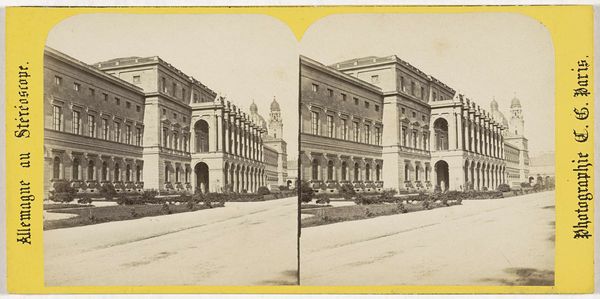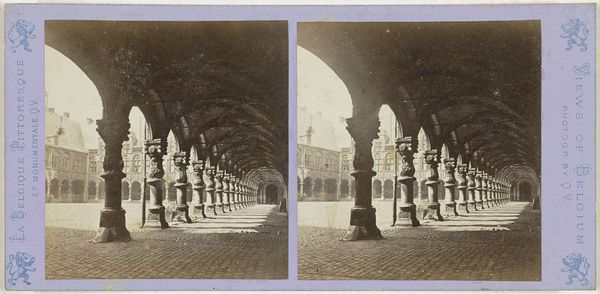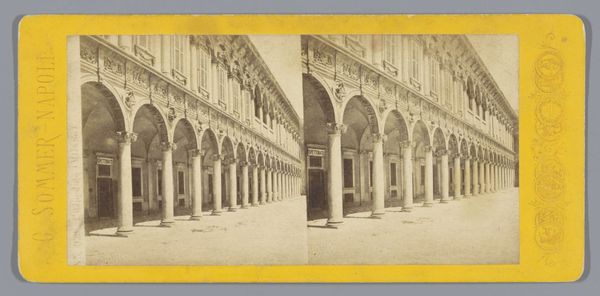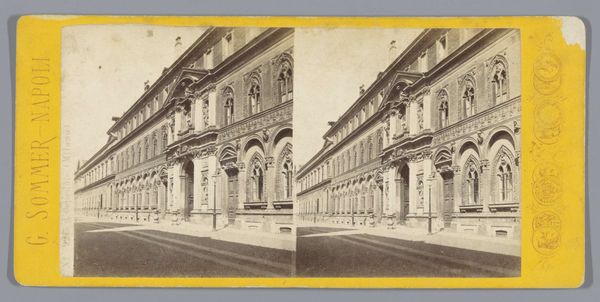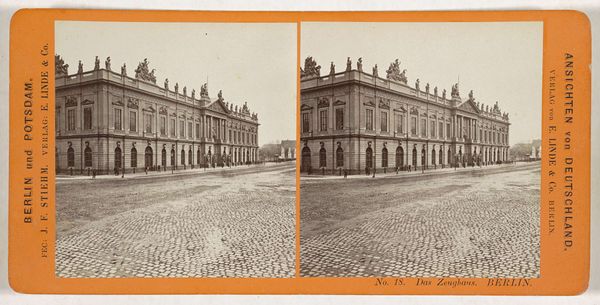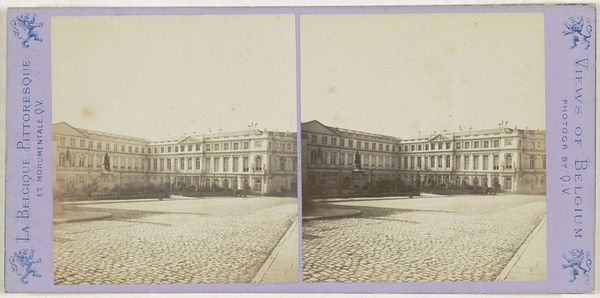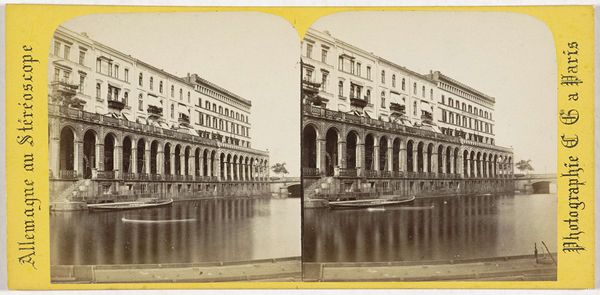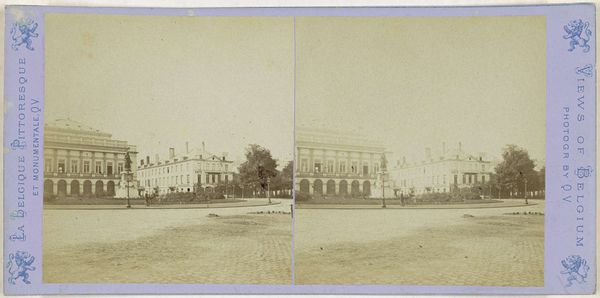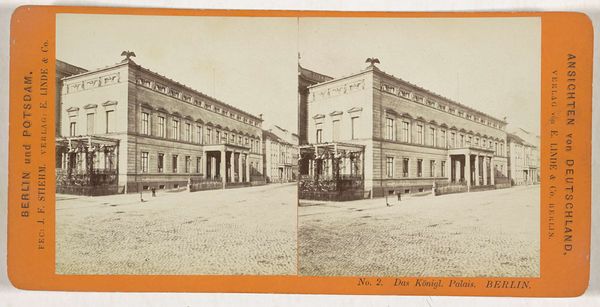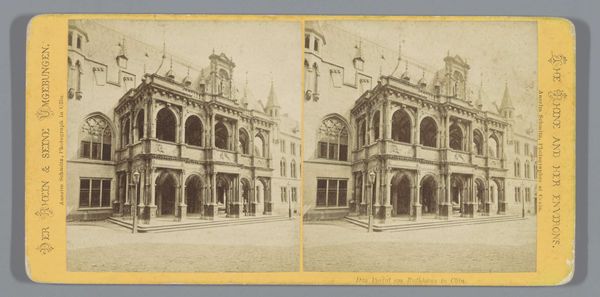
Gezicht op de binnenplaats van het Paleis van de prins-bisschoppen in Luik 1866 - 1870
0:00
0:00
juleshippolytequeval
Rijksmuseum
print, photography, architecture
# print
#
photography
#
cityscape
#
architecture
#
realism
Dimensions: height 86 mm, width 175 mm
Copyright: Rijks Museum: Open Domain
Curator: Standing before us is a photograph titled “Gezicht op de binnenplaats van het Paleis van de prins-bisschoppen in Luik,” placing us firmly in Liège, Belgium. Jules Hippolyte Quéval captured this view between 1866 and 1870. The albumen print captures an architectural study using a photographic medium, housed right here at the Rijksmuseum. Editor: There's a hushed quality to it, wouldn't you say? The colonnade receding into the distance gives a sense of contained grandeur, and those shadowed arches have an almost oppressive feel. It’s visually compelling yet somewhat...stifling? Curator: Indeed, that hushed quality resonates with the weight of history embodied within these walls. Consider what that palace represented, the power of the Prince-Bishops, both spiritual and temporal lords of Liège. This wasn’t just architecture; it was a stage for political maneuverings and religious authority. That imposing structure broadcasts a statement, I feel. Editor: It makes one wonder, who was this intended for? Was this an administrative space meant for serious endeavors? It seems like they were trying to intimidate guests and workers. How would one navigate these courtyards day after day? What stories would one recall after existing there for decades? Curator: Interesting perspectives. Consider too the photographic technique, albumen printing allowed for incredible detail. Note how each brick, each arch, is rendered with crisp precision. Queval wasn’t merely documenting; he was celebrating the enduring presence of power. In a sense, these realistic scenes served to further embed the ideas associated with the elite power structures, by showcasing them realistically as though to validate the state. Editor: And the emptiness enhances that effect, don't you think? There are no figures, no signs of life. Just stone and shadow and endless corridors implying bureaucratic entanglements and rules that are so clearly defined. Perhaps that silence emphasizes the enduring impact such power would have on an individual. Curator: Precisely. We are presented not merely with the image of a building, but a symbolic representation of an established authority that still casts a long shadow even today. The building becomes an emblem, loaded with cultural associations. Editor: It's certainly a striking piece that encourages us to reflect on architectural design, the reality of power, and how images and buildings come together. Curator: Absolutely, a beautiful and complex reflection on the past captured within a still moment.
Comments
No comments
Be the first to comment and join the conversation on the ultimate creative platform.

